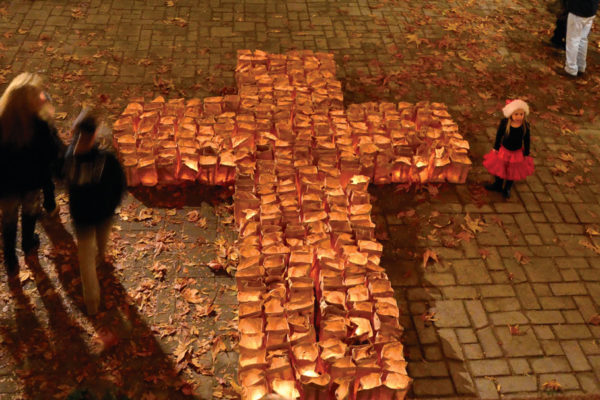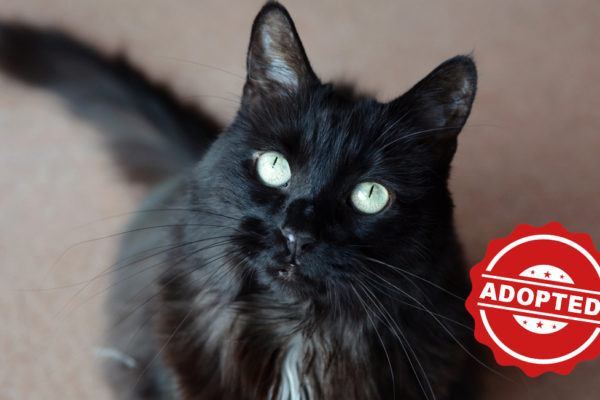Continued (page 2 of 2)
Cultured
On the edge of the plaza – but in many ways, at the center of modern Native American art – is the Museum of Contemporary Native Arts, the only museum of its kind in the world. In 1962, the Institute for American Indian Arts was established as an act of Congress, and its art collection quickly began to grow, leading to the formation of a museum in 1972. (Today, IAIA is the only four-year-degree fine arts institution in the country devoted to contemporary Native American and Alaska Native arts.) The museum didn’t find a permanent home until 1992 when the Federal Building in downtown Santa Fe was acquired, restored and renovated (it was built in 1922). Today the 4,000-square-foot, six-gallery museum acts as a steward for 8,000 artworks, the vast majority of which were created in 1962 or later. “Icons within the native art world are part of our collection,” says Candice Hopkins (Carcross/Tagish), chief curator.
During our visit last year, the curators were in the middle of opening the new Kieve Family Gallery, a 1,675-square-foot space housing the Visions and Visionaries exhibit through July 2017. Candice put together the exhibit along with An Evening Redness in the West, both opening the night of our tour. An Evening Redness in the West re-imagined the idea of the apocalypse. Beaded gas masks, body suits, paintings and one incredibly intricate, hand-drawn mural were the focus of the exhibit. The work that makes up Visions and Visionaries is divided into chapters that tell the story of the development of native art in the Southwest in the ’60s and its evolution into a national movement.
Good Eats
You’re going to get hungry from all the shopping, which is a good thing because Santa Fe has become a food mecca. New Mexican cuisine is in a class all on its own with its colorful red and green chilies, pillowy sopapillas and biscochito cookies. But in keeping with our exploration of the modern side of Indian Market, there’s one restaurant that stands out above the rest, and that’s Eloisa, located inside the Drury Plaza Hotel.
The restaurant opened in 2015 under the helm of John Rivera Sedlar; it is named after John’s grandmother, who was Georgia O’Keeffe’s personal chef for 15 years. John grew up in Santa Fe, but he spent 40 years cooking at restaurants in Los Angeles before returning to his hometown. Eloisa’s menu features modern southwestern cuisine. The dinner menu is a mix of small and large plates. The presentation of the food is so stunning that during our visit half of the diners were busy snapping Instagram photos. The Tortillas Florales are house-made nixtamal and pressed-flower tortillas served with avocado butter. The Jicama Tacos – jicama wafers topped with avocado, cilantro and serrano chilies – are served on a plate featuring John’s black-and-white family photos. Large plates include Potato-Wrapped Scallops, Dayboat scallops shrouded in crispy shoestring potatoes served on a diced cactus pad and topped with curried salsa verde. There’s also the Duck Enfrijolada: duck confit, blue-corn tortillas, radicchio, chevre and New Mexico cabernet-chile sauce. The interior of the restaurant features a large exhibition kitchen, white brick walls, plenty of stainless steel and pops of orange (to represent New Mexico’s frequently forgotten apricot heritage, says John). Check out the art installations, too.
For foodies looking to delve further into Santa Fe’s exciting culinary scene, take a course at the 26-year-old Santa Fe School of Cooking, which offers demonstration classes as well as hands-on classes. We experienced Chef Lois Ellen Frank’s Native American demonstration class. Lois (Kiowa/Sephardic) is a James Beard award-winning author (Foods of the Southwest Indian Nations published by Ten Speed Press in 2002), food photographer and owner of Red Mesa Cuisine. She also holds a Ph.D. in culinary anthropology. “When I was in school, no one talked about native culinary traditions,” says Lois. “And as a woman, you could either become a pastry chef or work under a man. But ethnic kitchens are ruled by women, so I had to cross a gender line.”
For three hours, we sat at linen clad tables in an airy room, learning about Native American and New Mexican foods and watching as Lois and Chef Walter Whitewater (Diné) prepared blue-corn gnocchi with guajillo-chilie sauce, seasonal greens with jalapeno dressing, lamb-stuffed rellenos with tomato sauce and sweet frybread with berries and homemade prickly pear syrup. Ingredients were passed around the class of 25 students who were visiting from all over the country so we could get a better feel – and smell – of what was cooking. The medicinal properties of chilies were discussed and the oft-ignored culinary traditions of native cultures was examined. The best part? We got to eat all of it in the end, and we took home recipes for each dish. (Food lovers should also take note that the cooking school’s gift shop is an ideal place to shop for cookbooks, spices and crockery.)
Rest Your Head
Everything mentioned here is within easy walking distance of the 219-room, four-diamond Eldorado Hotel & Spa. Named after the fabled – and never discovered – City of Gold, the hotel boasts a restaurant and lounge; spa; fitness center; wedding chapel (opened in 2015); rooftop pool and hot tub; and nearly 30,000 square feet of meeting space. (During Indian Market, that space is teaming with vendors including Sedona’s own Blue Elk Designs.) The rooms, including six suites, are decorated in New Mexico Pueblo Revival décor – some include wood-burning kiva fireplaces and private outdoor terraces with views of the surrounding Sangre de Cristo Mountains and downtown Santa Fe. Eldorado is pet friendly to boot.



